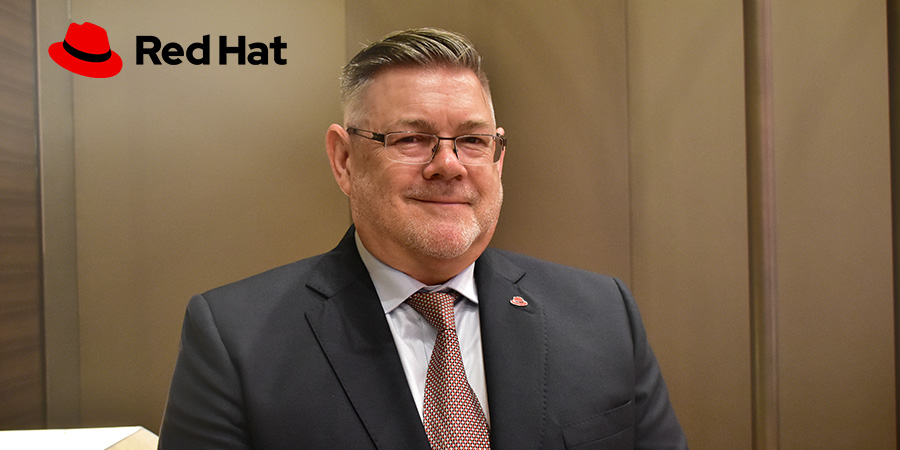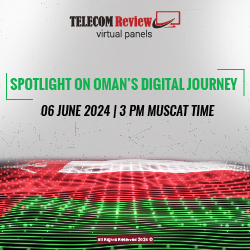In an exclusive interview with Telecom Review, Adrian Pickering, General Manager for Red Hat Middle East and North Africa, explained how Red Hat's open-source approach is impacting the operations and service delivery of telecom companies in the MENA region and beyond.
IT modernization and secure data management are integral, critical aspects of the wider organizational communication networks. Given the deployment of AI in network transformation, how is Red Hat helping its customers streamline the process securely and reliably?
Security remains one of the top agenda items for anyone in the technology industry, whether it's an enterprise organization or a public sector IT department within the telco domain. Security has to be built into processes and procedures when IT modernization is being undertaken.
Red Hat customers use a number of our tools, such as OpenShift, which is an application modernization platform and development tool. There are inherent security processes built into the application development/modernization cycle that enable an organization to innovate and develop quickly, while also having the confidence that the security considerations are built into their processes and built into the toolkit. This has been used by developers as they conduct their work.
In addition, from a processing perspective, Red Hat helps customers utilize the technology, tools, and DevOps processes offered, making sure that security is a consideration throughout the entire process. Looking at our overall automation of technology, Red Hat has introduced Ansible—an automation tool that allows IT leaders to automate things such as security patching and security upgrades, making sure that they've got a consistent level of security across their entire IT infrastructure. Ansible has proved to be very popular in the telecoms world, as organizations look to enhance and maintain a high grade and high level of security throughout the organization.
How do Red Hat’s solutions help companies reach their eco-friendly and sustainability goals?
Sustainability is on the agenda for most organizations, and, in particular, for telco operators who are constantly challenged to expand and modernize their networks, put new communication masts in place, expand their fixed footprint, and connect fiber to homes.
From a sustainability perspective, part of that mission is to ensure that you have efficient IT operations. Red Hat works with customers to look at how the processes and procedures can be enhanced, and, wherever possible, automated, as networks expand, telecom masts are placed, and so on.
We border many developing countries where electricity generation can be problematic. Operators are looking to power their communication masts through diesel generators for example. As such, Red Hat can leverage automation and will increasingly invest in AI tools to monitor the operation of these mobile generators to ensure that they are performing well, and that preventative maintenance has been carried out well in advance. This ensures that the problems are picked up quickly so that operators can utilize the field to address the issues efficiently and effectively.
Also Read: Red Hat: Addressing the 5G and AI Convergence in Saudi’s Telecom Sector
Please elaborate on how Red Hat is leveraging collaboration and innovation to empower its partners and customers to deliver value as an extension of its growth strategies.
Red Hat is a 31-year-old company, and its founding philosophy is: to work with communities of developers to rapidly design, develop, innovate, and deliver software solutions. This is unique in many ways.
In the world of software, we have ‘walked the walk’ in terms of adhering to this philosophy since the creation of the company. Red Hat’s software developers work with ‘upstream development communities.’ This allows us to deliver innovation to enhance our software offering at a pace that is unmatched by traditional software development methodologies, making us a $3 billion-plus company.
In line with our philosophy, when we were acquired by IBM in 2019, Red Hat continued to maintain its strategic direction and its development methodologies. Notably, the portfolio that we bring to the market is supported by IBM. I don't see that changing as we go forward. The collaborative and open-source mindset and methodology truly gives Red Hat a competitive advantage in the marketplace.
We work extremely closely with both customers and partners to ensure that they get the best of that methodology. Many of the customers and the partners that we work with are part of our Global Advisory boards. In many instances, we have customers who join us every quarter and provide community feedback as well as feedback on the performance of the software or the solutions we offer. They help us to outline what we should be considering in terms of enhancing and further developing our offerings. When both customers and partners start to look at open-source software as part of their portfolio, they will soon see the benefits and the advantages that it brings in terms of their company’s agility.
In light of today’s dynamic customer requirements and technological trends, what makes Red Hat the partner of choice for delivering telco cloud solutions?
What sets Red Hat apart from many of its competitors in the marketplace is that Red Hat is an industry-independent layer within a telco network environment that provides the network operator (or the service provider) with flexibility and choice as to how they construct their software-defined network environment.
We're, in essence, the glue that goes between the network, the physical network layer, and the SDN layer that allows the network to operate in a highly-efficient manner. It provides the telco operator with the flexibility of choice regarding the network technologies and the devices that they want to deploy within the network. This prevents them from getting into a ‘vendor lock-in’ situation.
If you look across the Middle East region, you'll find that many of the large incumbent operators that are in place in various countries have worked with Red Hat to provide a flexible layer that gives them the independence to select and optimize the operational cost of their platforms and services. I think it is a very unique differentiator.











